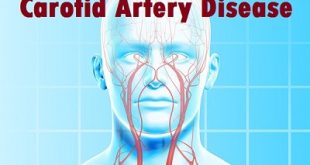Definition
Chagas disease is an inflammatory, infectious disease caused by the parasite Trypanosoma cruzi, which is found in the feces of the triatomine (reduviid) bug. Chagas disease is common in South America, Central America and Mexico, the primary home of the triatomine bug. Rare cases of Chagas disease have been found in the southern United States, as well. Also called American trypanosomiasis, Chagas disease can infect anyone. Left untreated, Chagas disease later can cause serious heart and digestive problems.
Chagas disease
History
On April 15, 1909, Carlos Chagas (1878-1934), a young researcher at Instituto Oswaldo Cruz (IOC; Oswaldo Cruz Institute), announced to the scientific world the discovery in Lassance, state of Minas Gerais, of a new tropical disease caused by the protozoan Trypanosoma cruzi (also described by him in 1908) and transmitted by a hematophagous bug popularly known as ‘barbeiro’ (known in english as barber bug or kissing bug) that proliferated in the mud walls of typical houses of the poor in rural areas.
Risk factors of chagas disease
The following factors may increase your risk of getting Chagas disease:
- Living in impoverished rural areas of Central America, South America and Mexico
- Living in a residence that contains triatomine bugs
- Receiving a blood transfusion or organ transplant from a person who carries the infection
It’s rare for travelers to the at-risk areas in South America, Central America and Mexico to contract Chagas disease because travelers tend to stay in well-constructed buildings, such as hotels. Triatomine bugs are usually found in structures built with mud or adobe or thatch.
Epidemiology of chagas disease
Chagas disease is endemic throughout much of Mexico, Central America, and South America where an estimated 8 million people are infected. The triatomine bug thrives under poor housing conditions (for example, mud walls, thatched roofs), so in endemic countries, people living in rural areas are at greatest risk for acquiring infection. Public health efforts aimed at preventing transmission have decreased the number of newly infected people and completely halted vectorborne transmission in some areas. Infection acquired from blood products, organ transplantation, or congenital transmission continues to pose a threat.
By applying published seroprevalence figures to immigrant populations, CDC estimates that more than 300,000 persons with Trypanosoma cruzi infection live in the United States. Most people in the United States acquired their infections in endemic countries. Although there are triatomine bugs in the U.S. , only rare vectorborne cases of Chagas disease have been documented.
Causes of chagas disease
If Chagas disease progresses to the chronic phase, serious heart or digestive complications may occur. These may include:
Heart failure: Heart failure occurs when your heart becomes so weak or stiff that it can’t pump enough blood to meet your body’s needs.
Enlargement of the esophagus (megaesophagus): This rare condition is caused by the abnormal widening (dilation) of your esophagus, which can result in difficulty with swallowing and digestion.
Enlargement of the colon (megacolon): Megacolon occurs when your colon becomes abnormally dilated, causing abdominal pain, distention and severe constipation
Symptoms of chagas disease
Chagas disease can cause a sudden, brief illness (acute), or it may be a long-lasting (chronic) condition. Symptoms range from mild to severe, although many people don’t experience symptoms until the chronic stage.
Acute phase
The acute phase of Chagas disease, which lasts for weeks or months, is often symptom-free. When signs and symptoms do occur, they are usually mild and may include:
- Swelling at the infection site
- Fever
- Fatigue
- Rash
- Body aches
- Eyelid swelling
- Headache
- Loss of appetite
- Nausea, diarrhea or vomiting
- Swollen glands
- Enlargement of your liver or spleen
Signs and symptoms that develop during the acute phase usually go away on their own. If left untreated, the infection persists and, in some cases, advances to the chronic phase.
Chronic phase
Signs and symptoms of the chronic phase of Chagas disease may occur 10 to 20 years after initial infection, or they may never occur. In severe cases, however, the signs and symptoms may include:
- Irregular heartbeat
- Congestive heart failure
- Sudden cardiac arrest
- Difficulty swallowing due to enlarged esophagus
- Abdominal pain or constipation due to enlarged colon
Diagnosis and test
Your doctor will conduct a physical exam, asking about your symptoms and any factors that put you at risk of Chagas disease.
If you have the signs and symptoms, blood tests can confirm the presence of the T. cruzi parasite or the proteins that your immune system creates (antibodies) to fight the parasite in your blood.
If you’re diagnosed with Chagas disease, you’ll likely undergo additional tests to determine whether the disease has entered the chronic phase and caused heart or digestive complications. These tests may include:
Electrocardiogram: a procedure that records the electrical activity of your heart
Chest X-ray: which lets your doctor see if your heart is enlarged
Echocardiogram: a test that uses sound waves to capture moving images of your heart, allowing your doctor to see any changes to the heart or its function
Abdominal X-ray: a procedure that uses radiation to capture images of your stomach, intestines and colon
Upper endoscopy: a procedure in which you swallow a thin, lighted tube (endoscope) that transmits images of your esophagus onto a screen
Treatment and medications
Treatment focuses on killing the parasite and managing signs and symptoms.
During the acute phase of Chagas disease, the prescription medications benznidazole and nifurtimox may be of benefit. Both drugs are available in the regions most affected by Chagas disease. In the United States, however, the drugs can be obtained only through the Centers for Disease Control and Prevention.
Once Chagas disease reaches the chronic phase, medications won’t cure the disease. But, the drugs may be offered to people younger than age 50 because they may help slow the progression of the disease and its most serious complications.
Additional treatment depends on the specific signs and symptoms:
Heart-related complications. Treatment may include medications, a pacemaker or other devices to regulate your heart rhythm, surgery or even a heart transplant.
Digestive-related complications. Treatment may include diet modification, medications, corticosteroids or, in severe cases, surgery.
Prevention of chagas disease
There is no vaccine. The best way to prevent it is by avoiding triatomine bugs. They tend to live in homes made from mud, adobe, straw, and palm thatch, according to the CDC. If you’re traveling in Latin America, it’s best to stay out of these types of dwellings. You can also protect yourself by using nets to cover your bed while sleeping.
Since 2007, blood banks in the U.S. have begun screening for Chagas, so there’s no longer any chance of infection from the blood supply in America.
 Diseases Treatments Dictionary This is complete solution to read all diseases treatments Which covers Prevention, Causes, Symptoms, Medical Terms, Drugs, Prescription, Natural Remedies with cures and Treatments. Most of the common diseases were listed in names, split with categories.
Diseases Treatments Dictionary This is complete solution to read all diseases treatments Which covers Prevention, Causes, Symptoms, Medical Terms, Drugs, Prescription, Natural Remedies with cures and Treatments. Most of the common diseases were listed in names, split with categories.







